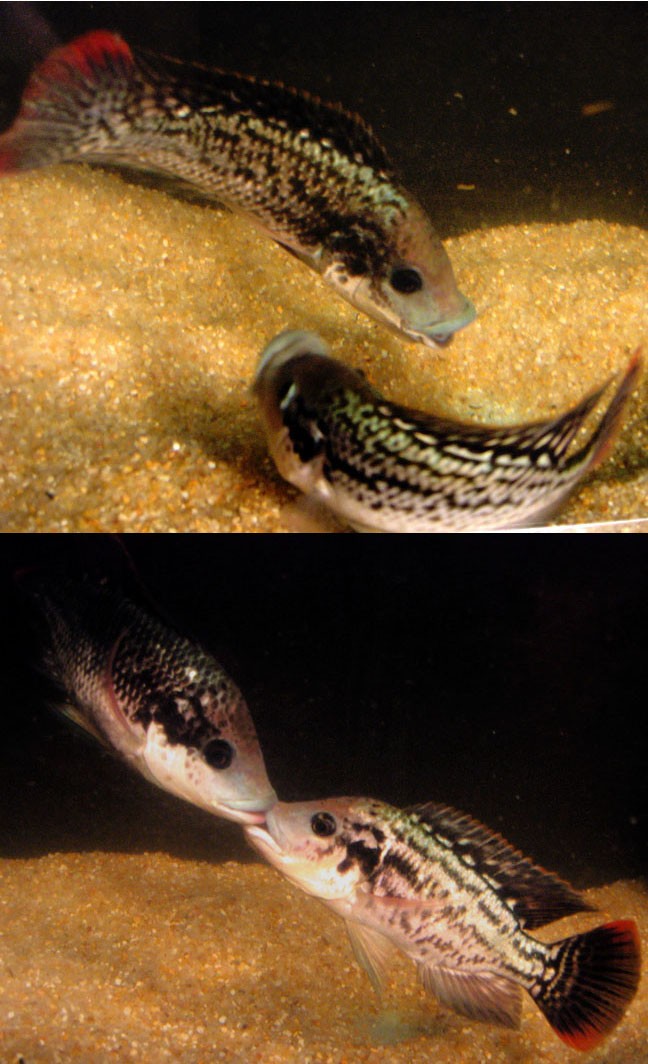A gene has been found in male cichlid fish that evolved to lure female fish so that male cichlids can deposit sperm in the females mouths. A study in BMC Biology reveals that the gene is associated with egg-like markings on the fins of cichlid fishes and uncovers the evolutionary history of these markings, which are central to the success of the fishes' exotic oral mating behavior.
Walter Salzburger, Ingo Braasch and Axel Meyer reared 19 cichlid species at Konstanz University in Germany and identified a gene involved in producing yellow pigment cells in oval spots on the fishes' fins.

These markings, known as egg-dummies, are found on the anal fins of the male fish and are crucial to mating. The fish are known as maternal mouthbrooders, because once the female has laid her eggs, she picks them up in her mouth. Attracted by what she takes to be eggs - actually the egg-dummy markings - the female then approaches the male. When the female is close to the anal fin, the male discharges sperm into the female's mouth to fertilize the eggs.
Cichlids are a family of fish that include tilapia and angel fish. There are more than 1,800 cichlid species found only in East Africa, and more than 80% of these belong to a grouping known as the haplochromines, which show the characteristic egg dummies.
The gene that is involved in producing the pigment spot that imitate eggs is called the colony-stimulating factor 1 receptor a (or csf1ra). The researchers also showed that the gene was expressed in the egg-dummies of a distantly related species, in which the spots developed on the pectoral fins rather than the anal fins. "The two kinds of independently evolved egg-dummies serve as a model system to test whether the same genetic pathways are involved in the morphogenesis of both types of dummies," say the authors.






Comments